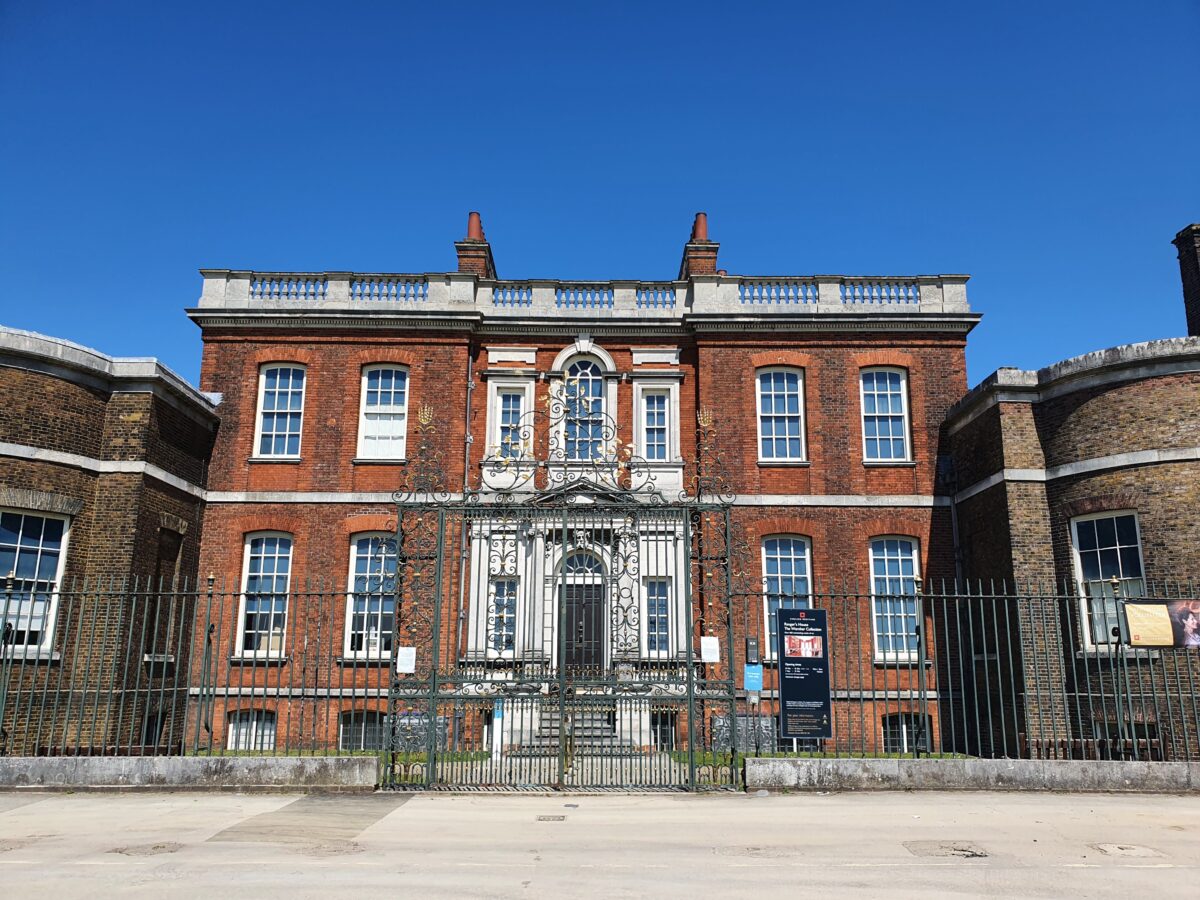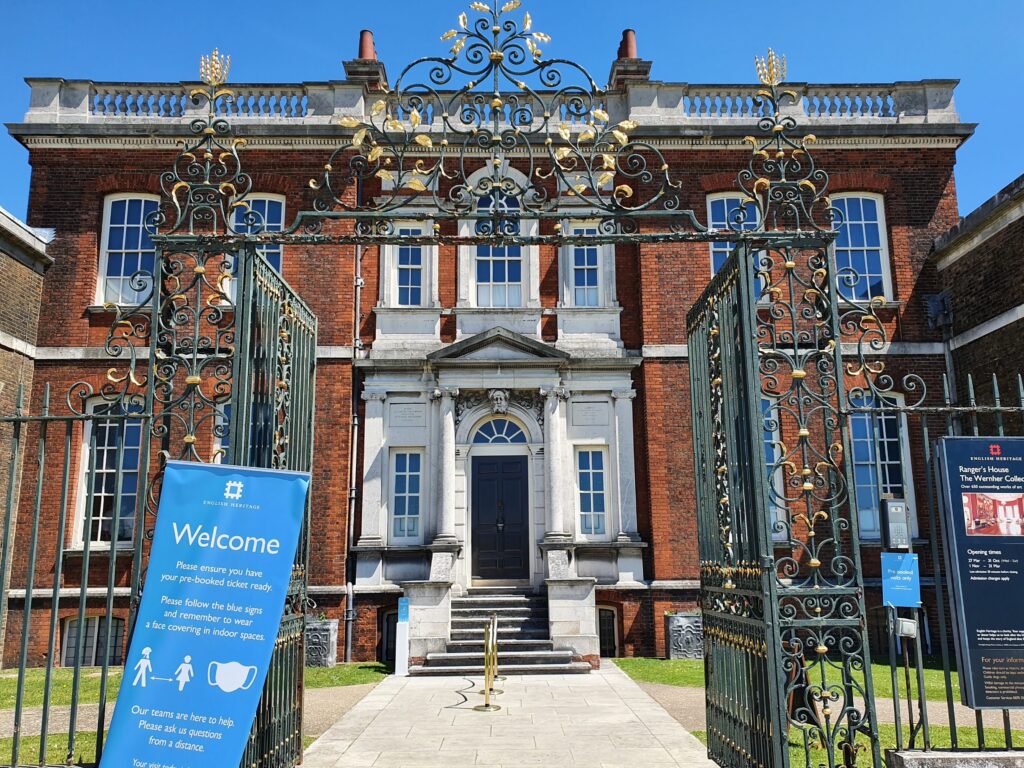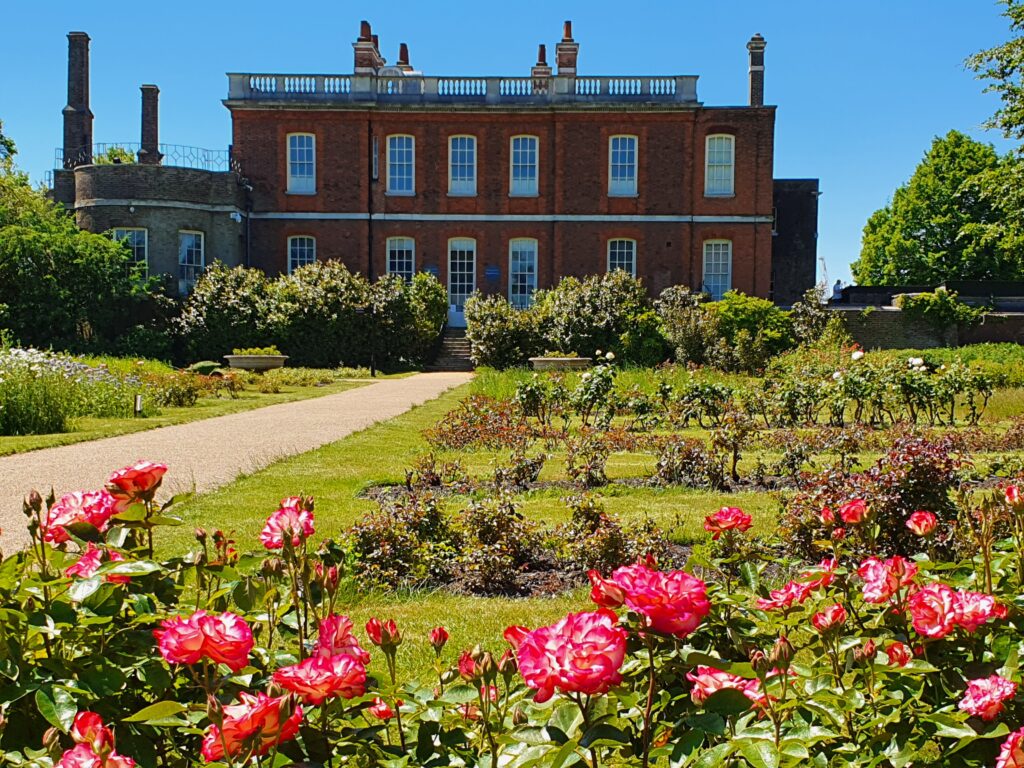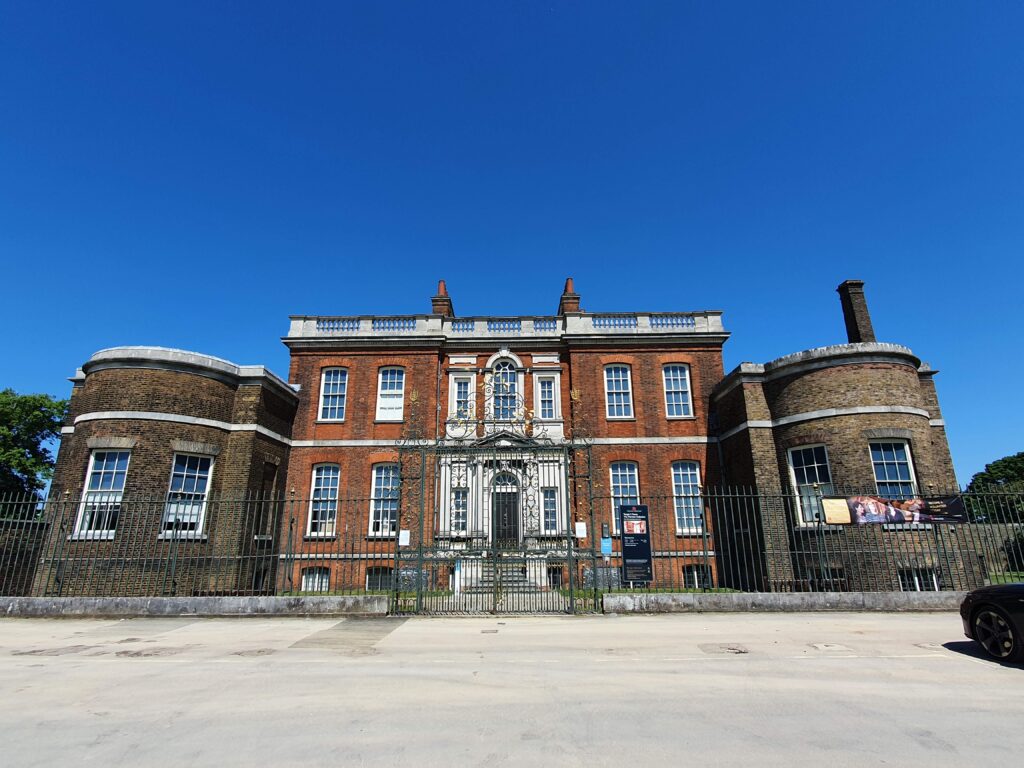London, England’s capital, dates back to the time of the Roman occupation of Britain. The capital keeps its 2000-year history well hidden, and if you didn’t know where to look, it would be easy to think that the modern city had erased all traces of the distant past. But if you begin to investigate, it is possible to discover the clues that help to paint a picture of Roman Londinium. I’ve been on a quest to explore every accessible Roman site and exhibit, and I’m sharing them here so visitors can plan their own Roman London tour.
On this page you’ll find a list of destinations to help you plot out your own quest to discover Londinium. Don’t expect high drama or the Roman Colosseum. The traces here in London are evocative and educational, not mighty and imposing. London’s Roman remains are impressive in the history they reveal and the sense of discovery they offer the explorer, not so much their outward appearance. Going on a hunt to find these mementos of the past can be a great adventure, from discovering the chunk of Roman timber under a church belltower to viewing a wild animal pen under an art gallery.
Once you start looking, Roman Londinium is still present in modern London – baths and amphitheatre included. The City of London, the famous business district known as the Square Mile, is situated directly over the ancient capital city. In some cases, streets and land use still echo former functions, carrying memories through nearly two thousand years of occupation. And there are tantalising glimpses of Londinium for the explorer to find, preserved in museums and hidden underneath modern buildings.
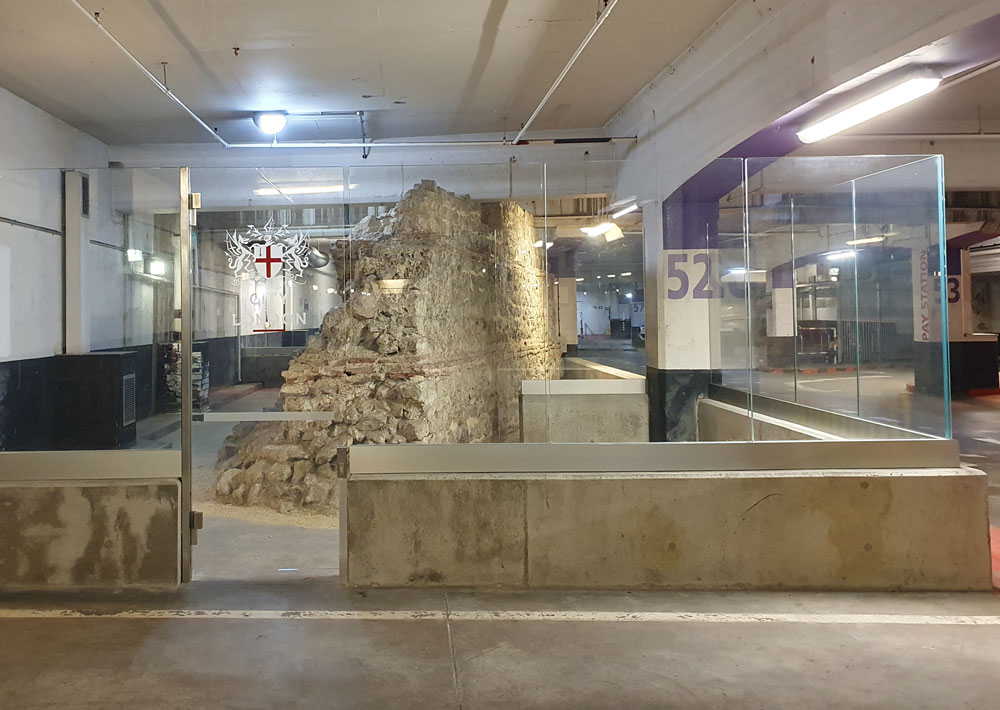
I’ve included on this page almost all the visible and visitable traces of Londinium, the Roman walled city, which I’m aware of. Living locally I very much enjoyed re-visiting favourite sites and discovering obscure new ones of which I was unaware. More archaeology is regularly discovered, investigated, revealed and often re-covered – I’ve touched on that too. Read on to plan your own adventure discovering Roman London and some secret spots in the City. I’ve begun with a brief history, followed by a list of places to visit, then tips for planning a Roman London itinerary and even suggestions for convenient places to stay.
Londinium: a brief history
Londinium was a strategic settlement established by the Romans in the years after they invaded Britain in 43 AD. At the lowest feasible bridging point on the River Thames, it became an important port and road hub. After being destroyed in the revolt of the Iceni tribe led by warrior Boudica, the town was rebuilt, with a fort at its north-eastern corner. Londinium reached its peak in importance and size during the 2nd century, as a provincial capital and with a population of several tens of thousands.
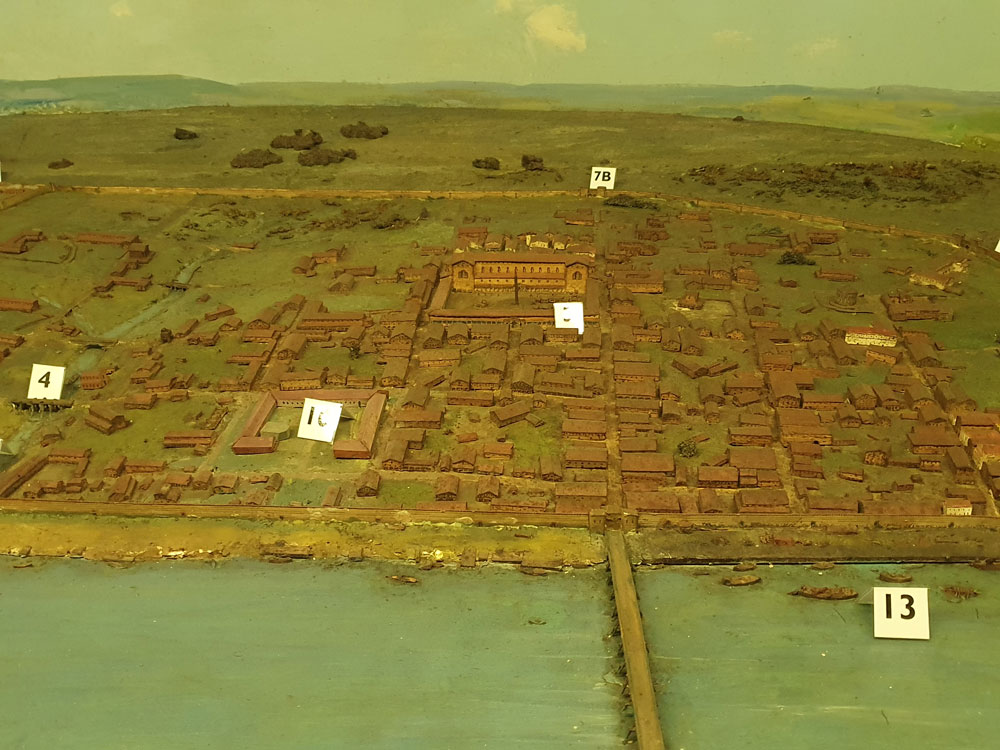
During the 3rd century Londinium seems to have dwindled, though by this stage it had a defensive wall circling the landward side of the settlement. After the Romans left, the city is thought to have been all but abandoned for several centuries, with a new settlement growing further west, where Covent Garden is today.
The attraction of the old Roman wall for protection, along with buildings which could be re-used, rebuilt or used as quarries for building material, drew a population back again. London grew and grew until the present-day, its Roman buildings buried and hidden under centuries-worth of later buildings. Even the city wall, which was used, restructured and added to up until the 17th century, eventually largely disappeared.
WW2 bombing and more recent demolitions and rebuilding of office blocks led to archaeological discoveries which continue today and keep adding to our knowledge of Roman Britain and Londinium.
Explore Roman London – the sights to visit
Here are the essential destinations for discovering Roman London, along with more obscure sights. Unfortunately for history-lovers, the most important museum for learning about Roman London, the Museum of London (due to rebrand as the London Museum) is closed at the time of writing (due to open 2026). I’ll still write about its collection here. In the meantime, there are still some fascinating historic sites to visit.
Quick visitors’ checklist
Free to see, no booking required: Roman amphitheatre at Guildhall art gallery; sections of the Roman city wall at various locations; All Hallows by the Tower; Roman timber outside St Magnus Martyr; British Museum; grave site by the Gherkin; City Wall at Vine Street;. Check opening times for the museums and churches.
Book ahead: London Mithraeum; Billingsgate Bath House (limited opening); Roman fort gate (occasional tours).
Currently closed/inaccessible: Museum of London; Roman Forum in a hairdressers. Check the links provided for reopening.
Note that visiting/opening details may change, so if you’re planning a tour, please check for the most up-to-date info using the links I’ve provided.

Roman amphitheatre – Guildhall Art Gallery
Like most self-respecting Roman towns, Londinium had an amphitheatre where residents would attend games to enjoy gladiatorial combat and displays. This was discovered in the 1980s, underneath the square and art gallery alongside London’s Guildhall. It’s interesting that public buildings like this were built over the foundations and ruins of that earlier public venue; an example of practical re-use which contributes to the continuity you can sometimes trace when overlaying the ancient city with the modern one.
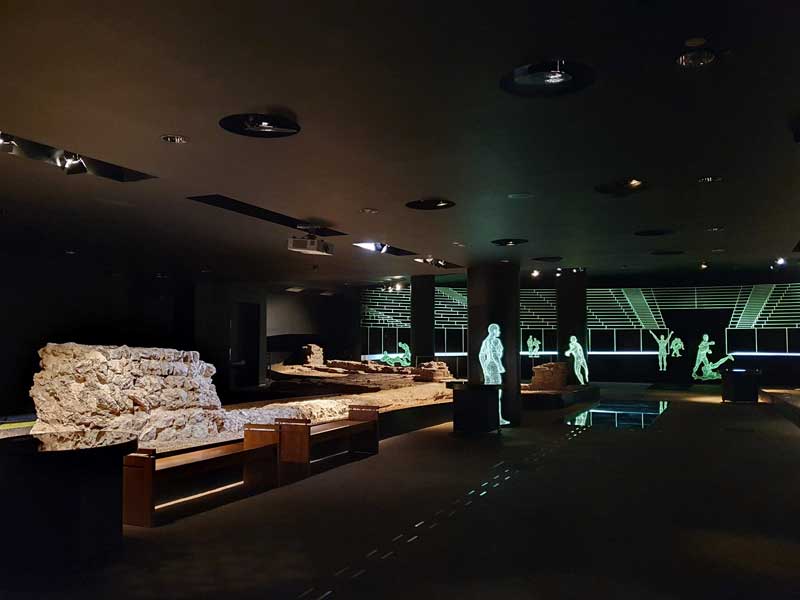
An entrance to the amphitheatre, some of its curving walls and drainage system are preserved under the Guildhall Art Gallery. The site’s well-presented with reconstructions and information. You can imagine the atmosphere facing a gladiator entering the ring, see the grooves where a trapdoor may have allowed wild beasts to enter the combat and admire Roman drainage techniques.
On the level above the ruins is a small display of archaeological finds, including Samian ware decorated with gladiatorial scenes. The gallery houses a permanent collection of art (mostly 19th and 20th century) and sometimes puts on interesting exhibitions, so you may want to allow extra time for this.

Outside in the Guildhall Yard look out for black lines in the paving. These trace out the shape of the Roman amphitheatre. The handsome white stone church alongside is St Lawrence Jewry; an interesting bit of speculation I’ve heard from an archaeologist is whether the small bricks high in its wall might possibly be re-used Roman bricks.
Visit: Guildhall Art Gallery, Guildhall Yard. Admission is free at the time of writing. Look out for special events and guided tours. https://www.cityoflondon.gov.uk/things-to-do/attractions-museums-entertainment/londons-roman-amphitheatre
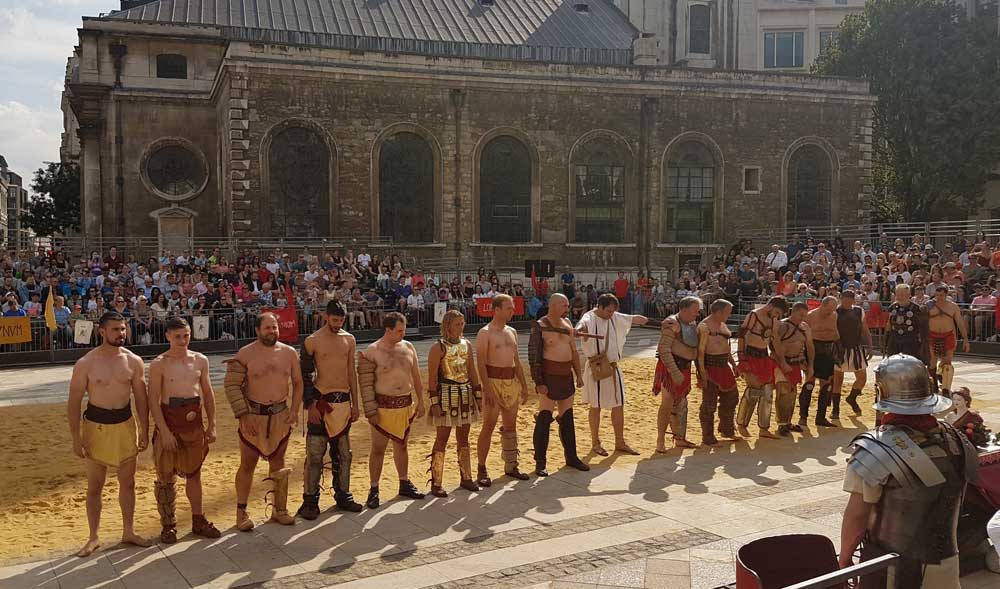
London’s Temple of Mithras
London’s Temple of Mithras, or Mithraeum, is one of the most flashily-presented Roman attractions in town. Impressive finds from this religious site are in the collections of the Museum of London. Rediscovered during during post-war rebuilding, this site was a sensation in the 1950s. Now it lies underneath Bloomberg’s European headquarters. We are in the heart of London’s business quarter and close to more modern ceremonial sites including Mansion House, official home and office of the Lord Mayor.
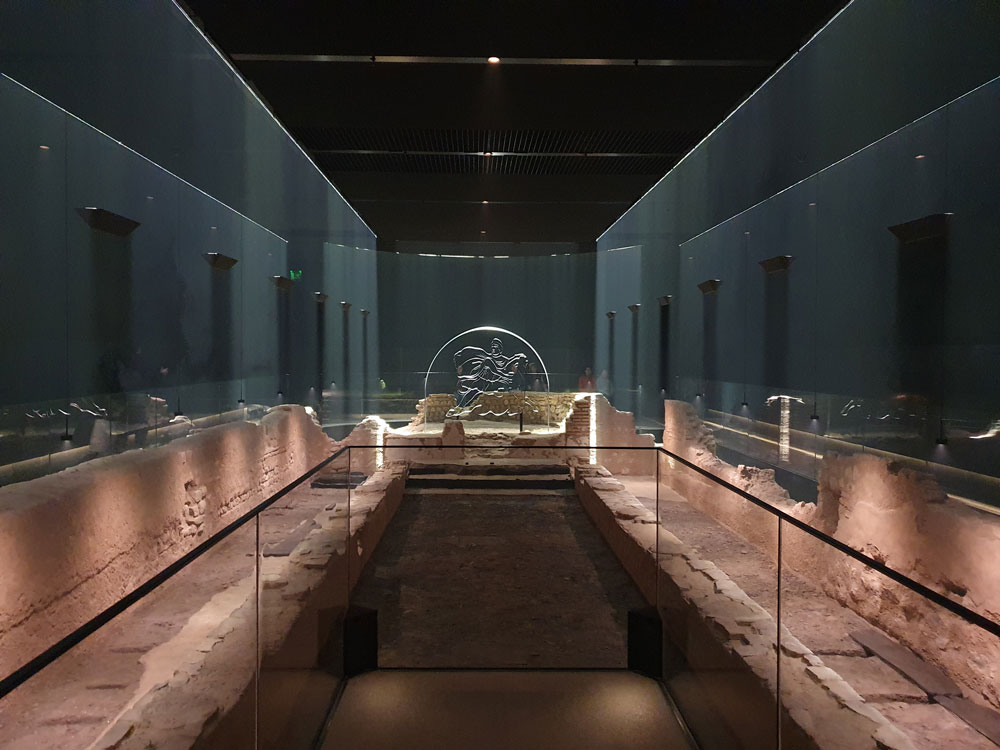
The entrance to the London Mithraeum is on Walbrook alongside an entrance to Bank station (separate to the main Bloomberg entrance). Contemporary art inspired by history greets the visitors before you reach a glass wall display of Roman finds from the site. Interactive tablets provide descriptions for each object, plus background information. It’s worth taking the time to study these as there are some interesting exhibits and nuggets of information here which all add to the patchwork of Roman London.

Downstairs is a space with models of the principal treasures from the site (now in the Museum of London collection), more interactive information and a narrated explanation of Mithraism. From here visitors move into the ruins themselves, open every 15 minutes with a 5-minute light-and-sound show. Spending half your time with the ruins in the dark during this immersive experience won’t necessarily suit all, but it is atmospheric and tries to make the most of the site’s limitations. Low walls, column bases and a glass panel replacing the altar relief of Mithras do give some idea of the original layout.
Visit: London Mithraeum, 12 Walbrook. Free admission; it’s a good idea to book ahead. https://www.londonmithraeum.com/
Billingsgate Bath House
Underneath the drabbest of office blocks on an ugly and busy street opposite the historic former fishmarket of Billingsgate, through an unpromising entrance, is this fantastic archaeological site. It’s only open occasionally but it is worth keeping an eye on special openings and tours.
A 2nd-century AD villa across a street from the river Thames was altered in the 3rd century, perhaps for conversion into an inn. A small bath house was built in the courtyard garden. Discovered in the Victorian era, the ruins of this building have been preserved and investigated over the subsequent years. There’s nothing fancy here; just the ruins, surrounded by sand to absorb the dampness from the Thames seeping through the ground, viewing platforms and cardboard boxes of finds. It’s low-tech and atmospheric.

The bath house was rather more like a sauna than a set of pools. It had small hot and warm rooms and a cold room with a bath. You can still see the stone stove which heated the hot room, the tiles from the hypocaust system, and the hollow bricks used to heat the walls.
Visit: Billingsgate Roman House and Baths, Lower Thames Street. Check opening arrangements /book: cityoflondon.gov.uk/bathhouse. Likely to be open April-November on Saturdays; admission fee, advance booking.
London’s Roman city wall
The Roman city wall with its later additions and adaptations can be seen at various points around the old city boundaries. Some stretches were built into or lost under more recent buildings, but have been exposed over the last century by bombing and demolitions. Now preserved, often with viewing areas and information boards, these provide an interesting visual lesson in London’s past. Sometimes the Roman origins have got lost, but in other stretches the lower parts of the wall are still clearly Roman in construction.
The walking route along the line of the city wall still features some handsome information tiles from past enhancement projects, and at Aldgate you’ll also find engraved paving stones. It’s not a bad walk for getting a sense of the ancient and medieval city boundary and for seeing some of the modern City’s variety, but explorers should bear in mind that there are long stretches with no visible traces of wall and the route misses out some of the interesting sites within the Roman town.
City Wall at Vine Street
This is the newest Roman site open to the public, down in the south-east corner of the Roman city. The remains on display here aren’t exclusively Roman; they show evidence of the different eras of development of the site. But you can see a Roman bastion that was part of the defensive city wall along with finds from the area. A video explains the history and archaeological finds are displayed on the walls. It’s all very well presented and an interesting window into London’s past and different stages in the life of the city.

The exit leads through an excellent café, Senzo, which occupies the same space and has tables overlooking the Roman wall and exhibition area. It’s a good refreshment stop on a tour of Roman London; I’m a fan of the white hot chocolate and almond pastries.
Visit: 12 Jewry Street. Free. As of my latest visit, booking ahead had ceased to be required, but I’d suggest checking the link below before you visit. If you can’t get inside, you can still get a good view of the wall through large windows at street level on Vine Street or from the mezzanine floor of the adjoining café. https://citywallvinestreet.org/
London Wall and Noble Street
Along the street named London Wall on the southern side of the Barbican Estate you can see several above-ground stretches of wall, though these are mostly medieval and later. The stretch at St Alphage Garden is attractively set-off, though, by gardens with benches to sit and enjoy a break or a picnic. The Barbican Estate alongside is named for its location on the site of the old Roman fort, and its architecture in places pays homage to this history.
Extending south from London Wall , near the corner of the walled city occupied by the Roman fort, Noble Street runs alongside a stretch of post-Roman wall later converted into buildings, then bombed and now left as a picturesque wildflower meadow. But at the southern end of this, near St Anne and St Agnes Church are the low ruins of a corner tower from the 2nd-century Roman fort.

Very close by, on the site of the grand Goldsmiths’ Hall on Foster Lane, a small Roman altar was found in 1830 during construction work. Dated to the 2nd century AD and thought to depict a local hunter-god, the altar is displayed in pride of place in the Court Room. The Hall is open occasionally for guided tours and for an autumn makers’ fair: https://www.thegoldsmiths.co.uk/.
Roman Wall – hidden in a car park
One of the City’s little secrets is a short stretch of the Roman city wall which has been conserved in an underground car park. You’ll see other stretches of wall above ground here, but these were more altered in the medieval era. This corner of Londinium was the location for a big fort against the defensive walls. The architecture and name of the Barbican Estate records this history, as did the former Museum of London building on the corner of the street called, yes, London Wall.

Visit: This is kind of a creepy place to visit and I’ve not found the best official pedestrian access, although the car park is public, and it has a manned office. I walked up and down an access ramp for cars located on the north side of London Wall, just east of its junction with Wood Street, close to the ruined tower of St Elsyng Spital. Once you’re down in the car park, look for parking bay 52 and you will find the chunky section of wall, unmistakeably Roman. Be really careful of vehicles using the car park.
Roman fort gate – underground ruins
Across the road to the north of Noble Street, close to the old Museum of London site (due for redevelopment) are the remains of a Roman fort gate. This was the west gate to the fort which stood at the north-western corner of Londinium. Constructed in the years leading up to 120AD, the fort was replaced a century later by wall encircling the city, and the gateway remained as an entrance to the city.
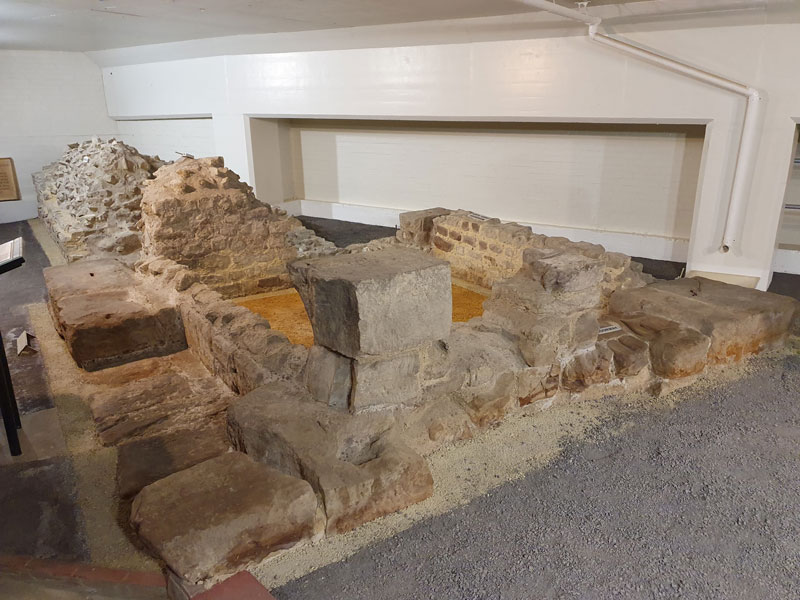
The gate ruins are preserved inside a a locked subterranean room alongside the London Wall car park next to the Barber-Surgeons’ Gardens. At the time of writing, the site can only be visited occasionally on special tours run by the Museum of London. Once this area is redeveloped (a massive project), I’ve been told the site may be freely accessible to the public.
The low ruins here are pretty slight compared to still-standing gates to the same design in Italy and elsewhere, but if you are picking off the sights of Roman London, this should be on your list. A small model helps visitors to visualise how the gateway would have looked. You can see the base of the turret and guard room which stood to one side of the gate and part of the foundation of a central pier which divided two archways. Points of interest include post holes for the gate, the ‘join’ where the defences were widened when the gateway became part of the new city wall, and several large sandstone blocks used in the rubble base which may previously have been part of a larger and grander building or monument.
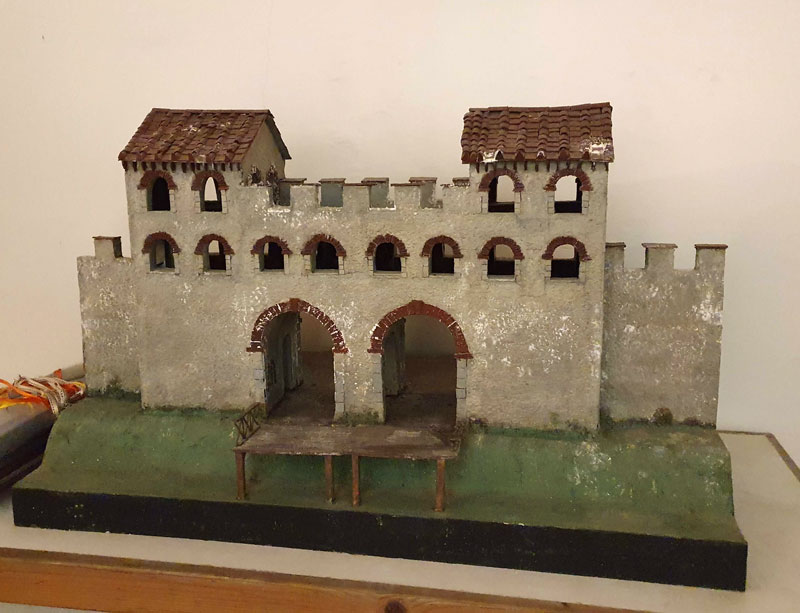
Visit: check for tours and book ahead through the Museum of London https://www.museumoflondon.org.uk/museum-london/whats-on/event-detail?id=1408
Roman Wall: Cooper’s Row and Tower Hill – a well-preserved stretch in the open
One of the best stretches of city wall is just south of the museum site at Vine Street (described above). Hidden in a couple of yards between Vine Street/Crescent and Cooper’s Row is a long section of wall heading directly to the Tower of London. While the upper parts are from later eras, you can look down below modern ground level and see the brick and ragstone construction dating to the Roman era. It’s an appealing surreal location surrounding by modern buildings including a hotel.
Although you can’t walk along the wall leading to the Tower of London, you can walk around the block to rejoin the wall alongside Tower Hill station. Set into the wall in this touristy spot you’ll find a couple of blocks bearing monumental Latin inscriptions. These are replicas of stone panels from the 1st-century tomb of Gaius Julius Alpinus Classicianus, Procurator of Britain appointed by Nero, dedicated by his wife Julia Pacata Indiana. The tomb was broken up and its pieces re-used in the wall around 300 years later. The originals are now in the British Museum (British Museum, Roman Inscriptions of Britain), incorporated into a reconstruction of the original tomb (photo below).
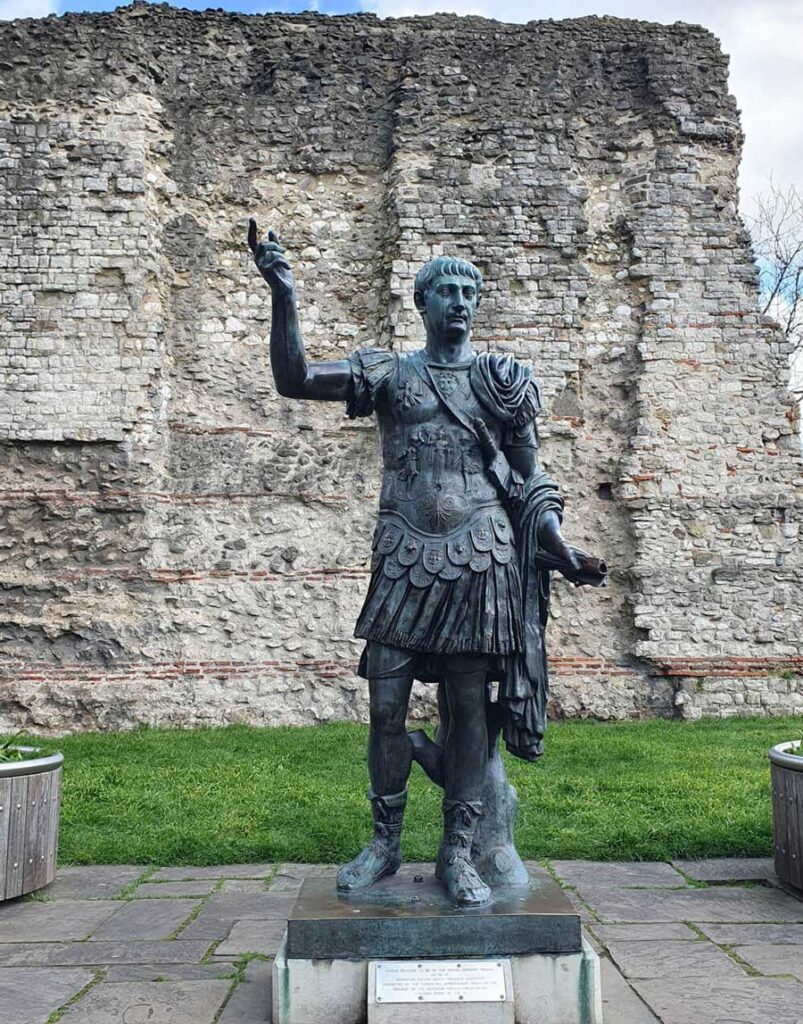
Down a flight of steps towards the Tower of London, a 20th-century bronze statue of the Roman Emperor Trajan stands before the wall, practically inviting tourists to strike a pose alongside for their holiday selfies. Of obscure origins, the statue is, at least in part, a cast of an ancient sculpture found in Italy and may have been salvaged from a scrapyard a century ago. It was installed here in 1980.
Roman timber at St Magnus the Martyr
The handsome church of St Magnus the Martyr once stood at the northern end of the older London Bridge. The church is worth visiting in itself, but those on a Roman pilgrimage will be interested in an ancient length of timber standing under its belltower, outside the entrance door of the church. This has been identified as a piece of wood from the Roman bridge or from a Roman wharf nearby.

All Hallows by the Tower
An unexpected window into Roman London, this church on the City side of the Tower of London is, like many other of the older buildings around here, built on ancient foundations. Severely damaged in WW2 bombing, it was rebuilt. I spent years in London without realising how fascinating this church is and how much there is to see within. In its Crypt Museum, along with curious exhibits from many eras, you can see a section of Roman floor from a house that once stood here.
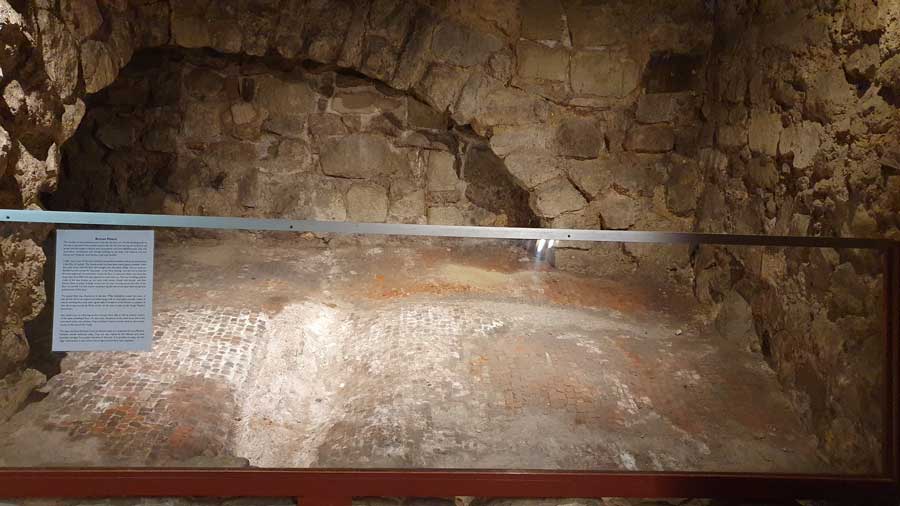
The stairs to the crypt descend into the atmospheric exhibition space, where one of the first things you see is the stretch of Roman flooring. The stretch of buckled terracotta tessserae dates to a dwelling built here at the end of the second century AD. Visitors cross a relaid section of tessellated flooring to reach the rest of the crypt museum.
Other Roman exhibits here include casts of gravestones found in the City. During the closure of the London Museum, this is one of the best places to see artefacts from Londinium, with a large display case containing fragments of sculpture, pottery, styli, a key, part of a tombstone depicting a couple with a Greek inscription (there’s a theory this came from a post-Grand Tour imported aristocratic collection rather than originating in Londinium) and even small fragments of decorative painted plaster from a long-ago elegant home.

A model of Roman London (photo near top of this page) gives a good overview of the ancient city. The model was created in the 1930s, with the Mithraeum and barracks added later after they were discovered. Knowledge of Roman London has increased since then, including the location of the Amphitheatre, but still this is a helpful impression of Londinium.
There are fascinating post-Roman exhibits and curiosities here too, thanks to the long history of the church’s site. I’m concentrating on the Roman finds in this article, but it is really worth spending time on the rest of the museum. One of the most evocative sights is a ‘stalactite’ of lead which melted from the roof when the church was bombed in WW2.
Entrance is free, but do consider a donation for upkeep. https://ahbtt.org.uk/
Roman Forum and Londinium’s Basilica – underneath a hairdresser
Update: since researching this article, the hair salon has closed down and it’s unclear what the future holds for the premises.
London’s large Forum was situated on the same spot where you’ll find Leadenhall Market today – another example of continuity through the ages. Various parts of the forum have been investigated in archaeological digs during demolition/construction work over the years, but are now covered again. However, one corner of the base of the public basilica could until recently be seen in the unlikeliest of settings.
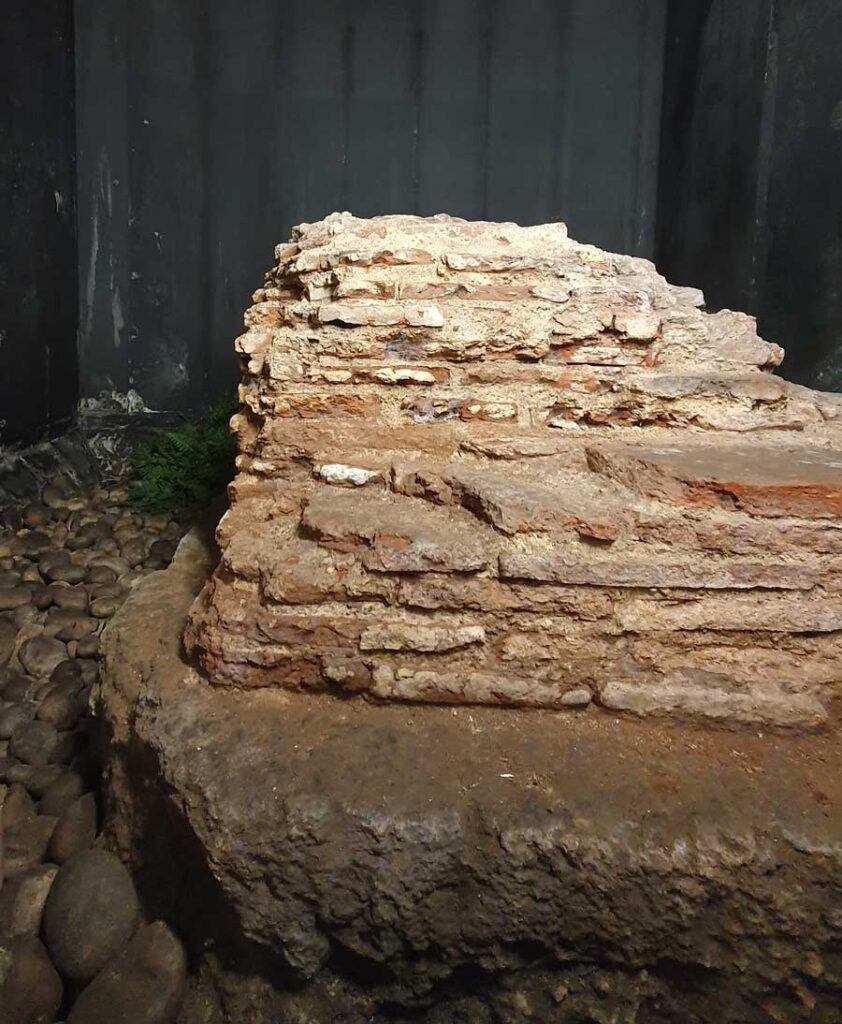
In the basement of a hairdressers’ salon, behind a glass wall, you can see a short section of wall. Admittedly, like London’s other Roman ruins, it’s not much in comparison with what you might have seen in other countries nearer the heart of the Roman Empire. But it’s still a fascinating experience that helps to convey the way the Roman city hides beneath our modern one.

Visit: Sadly, awaiting updates. Nicholson & Griffin, 90 Gracechurch Street, at the entrance to Leadenhall Market. Check the opening hours, ask at reception, then descend the steep staircase, past customers having their hair done, to see the ruins in a corner – there’s an information board and signs through the salon. https://www.nicholsonandgriffin.com/
Grave of a young Roman woman
During the construction of the tower at 30, St Mary Axe, better known as the Gherkin, the grave of a Roman girl, or young woman, was discovered. She seems to have been buried away from busier cemetery sites, just outside the city boundary, in the second half of the 4th century. After archaeological study, the remains were reburied with a ceremony.
The long-dead Londoner is commemorated with an inscription on a bench to the east of the Gherkin. A slab bearing a wreath is set in the ground in front of this, presumably covering the reburial site. Although you can’t actually see any Roman objects here, it’s an evocative spot to reflect on the past during a tour of Roman London.
Visit: Open air, open to the public at all times. Bury Street.

Museum of London
Currently closed as its new base at Smithfield is being developed, and due to open in 2026 (fingers crossed!), the museum formerly known as the Museum of London has the best collection of Roman finds from Londinium. The museum was previously housed in a purpose-built space in a corner of the city walls at the Barbican. For some reason, the museum closed its doors before planning permission was even granted for the redevelopment of its current site, and long before the planned opening of the new museum, depriving Londoners and visitors of this important historical collection for several years – a severe loss, especially for children who would have been the right age to engage with history here.
The museum is apparently rebranding as the London Museum. I’d guess this is to attract visitors searching in Google, but given London has many different museums, it seems a shame to lose a name which actually described the museum’s subject matter, at a rebranding cost that must be astronomical.
My personal opinions aside, the museum has many treasures in its collection, all of which will hopefully be displayed to great effect in the new spaces. There had recently been an emphasis on visitor numbers rather than visitor experience, and a dumbing down of labelling and displays, but however the new spaces are presented, it will again be an essential stop for understanding and appreciating London’s Roman (and later) history. Once the new-name new-look museum is open, I’d recommend making this a first or last stop on your Londinium tour.
British Museum
While much of the wealth of finds from Roman London is in the Museum of London’s collection, the British Museum also has a few star exhibits from Roman Britain, including London finds. These include the 3rd-century AD Bank of England Mosaic, found under the Bank of England in the heart of the City of London and a bronze head of Hadrian found in the Thames, which may have originally been displayed in honour of the emperor’s visit to Britain in 122 AD.
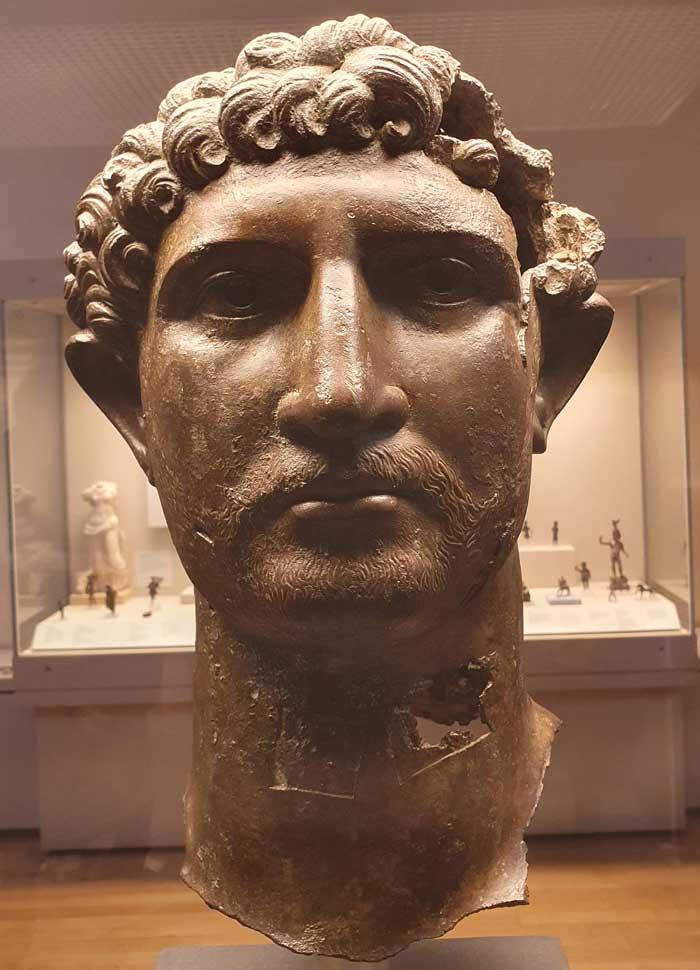
Head to Room 49 (upper floor) for the museum’s Roman Britain collection: objects found in London are spread through this large room. On the walls are two important mosaic finds: the Leadenhall Street Mosaic, a small circular mosaic featuring Bacchus riding a tiger, oddly smooth and shiny thanks to Victorian restoration, and the square Bank of England mosaic.
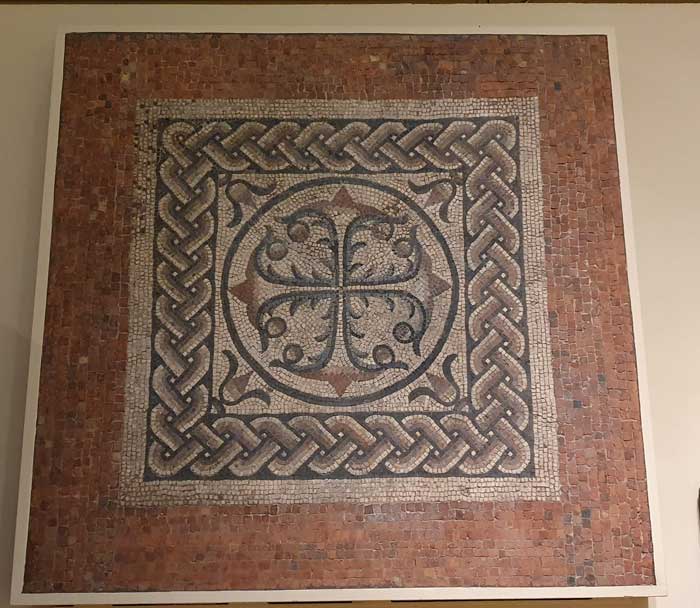
The tomb of Gaius Julius Alpinus Classicianus has been reconstructed here, with the pieces which were discovered after being reused in the Roman city wall (you may have seen replicas replacing these if you’ve toured the wall, as described above). Another tombstone from Tower Hill commemorates Aulus Alfidius Olussa, from Athens, who died in Londinium aged 70.
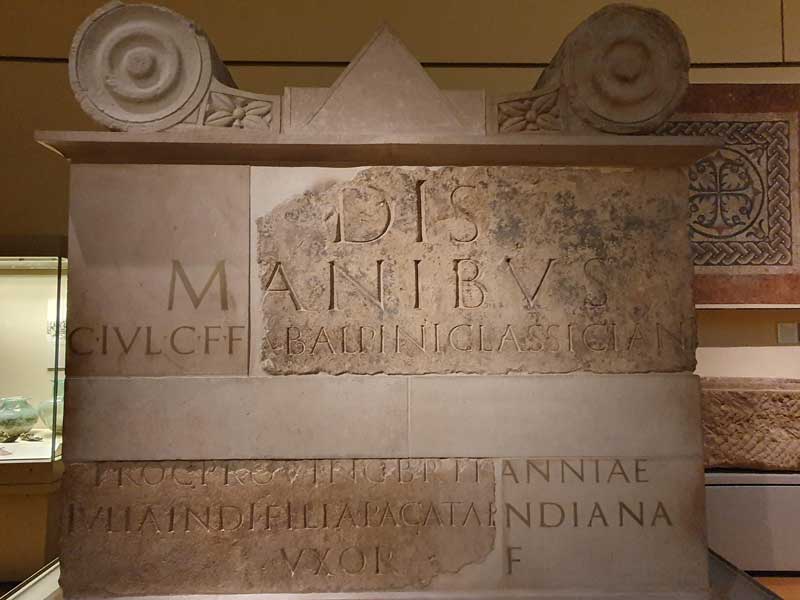
Other finds to look out for include a stone cult statue of Atys, in Phrygian cap and cloak, and statuettes given back by the Thames, including a hermaphrodite holding a mirror, and an elegant Apollo. A bronze tap decorated with a wolf’s head was found in Philpot Lane in the City, and may have come from a public fountain. A limestone sarcophagus from the 4th century was found in Haydon Square, just outside the city gate at Aldgate, and contained a young boy’s skeleton in a lead coffin.
Visit: https://www.britishmuseum.org/
Planning a City of London Roman itinerary
While the Museum of London is closed, I’d suggest starting at London Wall, along the northern limit of the ancient city. The Moorgate exit of the Elizabeth line’s Liverpool Street station is very close by, as is Moorgate station. Barbican, St Paul’s, Farringdon (Elizabeth Line – Barbican exit) and Bank are the next nearest stations. Take a look at the chunks of wall above ground at various points along London Wall, heading down into the car park to see the ‘secret’ section in Bay 52. Take in the ruins in Noble Street.
Next head to the Guildhall Art Gallery to visit the Amphitheatre. From here head south to the Mithraeum, then east to the Forum at Leadenhall Market. If the Billingsgate Bath House is open and you’ve booked a visit, head there next if that fits timing-wise. Otherwise, skip that site and head east to Vine Street and see the Roman wall remains there and further south at Cooper’s Row and Tower Hill. Head back past the Gherkin and the Tomb of the Unknown Girl towards Liverpool Street station, or wherever you wish to finish your exploration.
This route takes you past or close to many of the varied sights of the City of London, so although the physical evidence of Roman London is scanty, your exploration will also provide an interesting tour of the above-ground City.

Once the Museum of London/London Museum has reopened at its new Smithfield base, on the edge of the City, I’d suggest either starting or ending your itinerary here. Allow plenty of time, especially if you’ll be touring the whole museum and not just the Roman exhibits.
The British Museum is further from the City, and if you’re a history-lover in London, I’m sure you’ll be visiting it during your stay anyway, so I’ve not included it in this one-day itinerary.
Other locations and opportunities
When London’s older buildings are pulled down and the sites are rebuilt, developers are required to call in archaeologists to investigate before building work goes ahead. As there has been a high turnover of buildings in central London in the last couple of hundred years, amplified by rebuilding after WW2 bombing, many Roman discoveries have been made this way.
Roman London is around 6-7 metres below the surface of the modern city. Although most sites are covered over after investigation, archaeological evidence is removed for conservation along with important information, which adds to the knowledge of Londinium. Sometimes mosaics or ruins are preserved in situ, like a few of those listed above.
News articles and public announcements provide updates on the latest discoveries and any opportunities to see more traces of the ancient town. At the time of writing a recently-discovered mosaic is due to be incorporated into a new building project at Bankside, south of the Thames. More sites and news articles are below.
Archaeologists uncover many of the clues to London’s past. But others are found by London’s licenced mudlarks, who work along the shores of the tidal Thames. These women and men, often self-taught experts, find objects from all eras of London’s history, including the Roman age. Occasionally there is a chance to see displays of their discoveries, including Samian ware and Roman footwear.
You can follow mudlarks on social media, read their books and look out for exhibitions. At the time of writing there’s an ongoing exhibition at Southwark Cathedral, as well as various pop-up exhibitions programmed through the year.
Bankside mosaic and mausoleum
This 2022-2023 discovery south of the river Thames gives an idea of the scale of Londinum at its peak. There are plans for this site to be publicly accessible once construction of the Liberty of Southwark project is completed.
- https://www.theguardian.com/uk-news/2022/feb/22/lavish-roman-mosaic-is-biggest-found-in-london-for-50-years
- https://www.constructionenquirer.com/2024/02/02/london-scheme-revamped-to-house-stunning-roman-mosaics/
- https://www.mola.org.uk/discoveries/news/first-its-kind-roman-mausoleum-unearthed-london-development-site
- https://thedig.thelibertyofsouthwark.com/journal/
Mosaic at 11 Ironmonger Lane – There’s a Roman mosaic under this office building near the Guildhall, on the site of a house which would have stood near a couple of temples and the amphitheatre. Currently not accessible to the public: Flickr photo (2013)
Roman baths at Huggin Hill – Londinium’s largest public baths that have been found are located close to St Paul’s and the river. After excavation they were covered up again and are underneath modern buildings. Various old stretches of wall can be seen in the secretive little park Cleary Garden – none of these look as though they date back to the Roman era, though. The park’s design remembers its Roman and medieval past, evoking colonnades and vineyards.
News articles and discoveries
Cemetery excavation near Holborn Viaduct: https://mola-newsroom.prgloo.com/news/first-complete-roman-funerary-bed-among-extraordinary-new-archaeological-discoveries-in-central-london (2024)
Further reading on Roman London
Here are some suggestions for learning more about Roman London, with affiliate links to purchase from Amazon.co.uk while supporting this website.
- Exploring Roman London – Simon Webb
- London in the Roman World – Dominic Perring
- Londinium: A Biography – Richard Hingley
Guided walks
If you’d prefer to discover Roman London in the company of a knowledgeable tour guide, the official City of London guides offer a range of walking tours including one with a Roman London theme. City of London Guides
Stay in Londinium
The City of London and its fringes isn’t one of London’s traditional tourist lodging areas, but it’s a convenient base for exploring central London, travelling to and from airports – and of course it’s ideal for touring the site of the ancient city. There’s a cluster of modern tourist hotels north of the Tower of London; others are aimed more at business travellers and scattered through the area. The links below are affiliate links and using these will mean you are supporting this website without paying any extra.
- Vintry & Mercer – well-reviewed and smart 5-star close to the Mithraeum for a classy and central stay.
- COVE Cannon Street – studios and apartments for an independent stay in the heart of the City.
- The Rookery – stylish hotel in Clerkenwell close to Farringdon station (handy for travel) and the future site of the London Museum at Smithfield. Outside the Roman city boundary, but still convenient for the area.
- citizenM Tower of London – efficient modern stays right next to the stretch of Roman wall by the Tower of London.
- Leonardo Royal London St Paul’s – 4-star close to St Paul’s with a swimming pool. A practical base.
- London places to stay: a complete search

